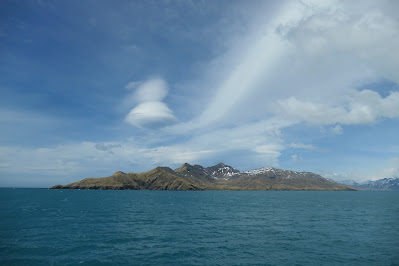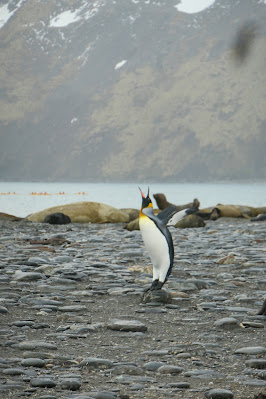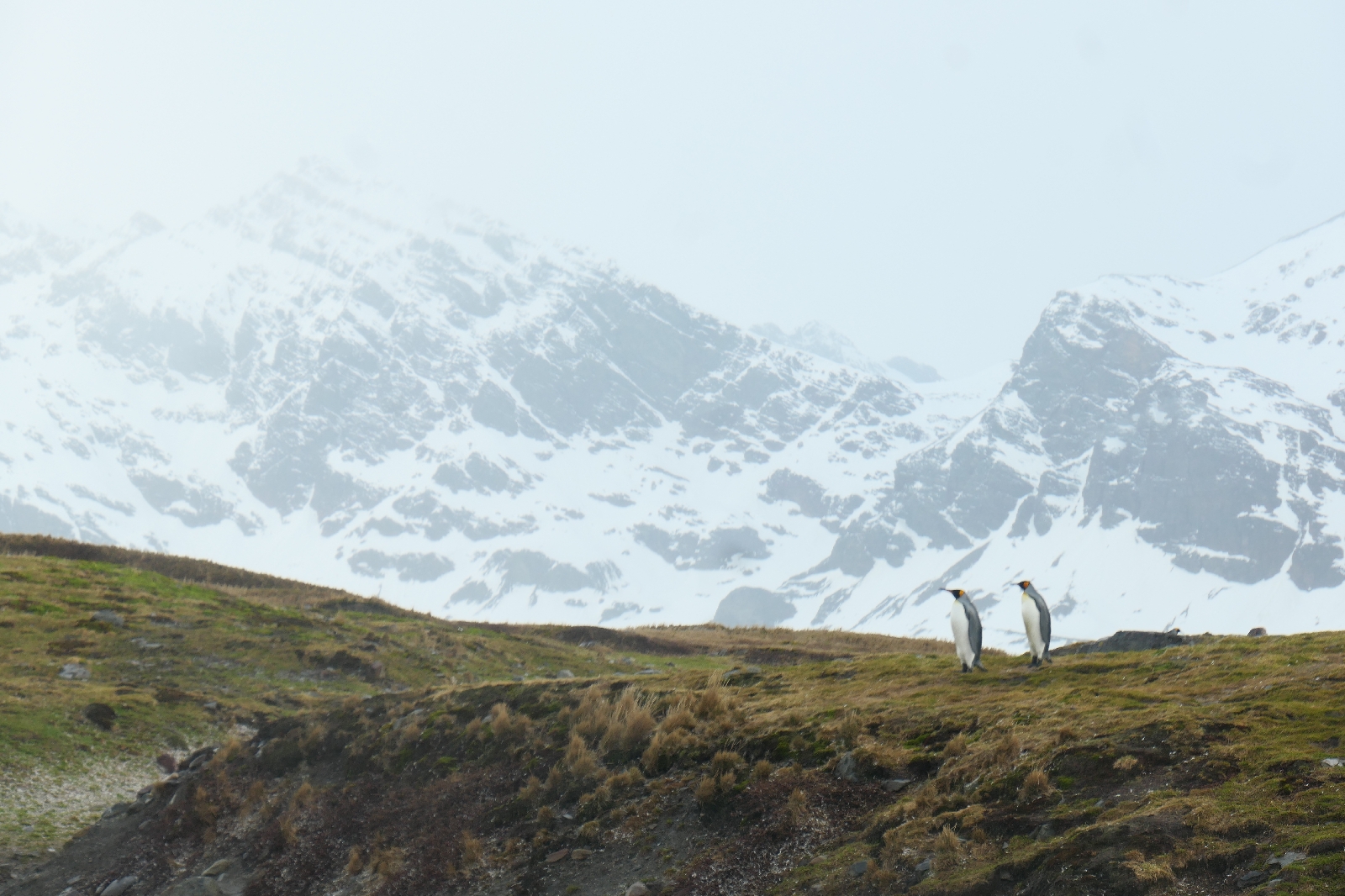I've got my camera set to take three photos for every one I shoot to get different light. But now it won't let me look at more than a few photos at a time so I can erase some of them. I tried to erase some on the ship's computer but they didn't disappear when I put the card back in the camera. Things you just can't prepare for. At least I didn't.
Anyway, back to South Georgia. I'm losing track of days but it might have been November 3?
Our day started with an early wake up call and breakfast. We had a mandatory meeting with the S. Georgian biosecurity officer who gave us a little talk on mammal eradication. They killed all of the introduced elk and then moved onto the rodents. It took five years but the island is rat and mouse free now. So, while we were watching a video, our ship was being gone over by the rat patrol dogs. We are also rodent free I am happy to hear. And our gear was approved so we were allowed to disembark.
We started at the cemetery and Shackleton's grave. Neil, our ship historian, poured everyone a shot of Jameson's Whiskey to toast the boss. I don't think I have every had a shot of whiskey before but Shackleton's grave seemed a appropriate time.
 |
| Frank Wild, Shackleton's right hand man buried to the right of Shackleton's grave but technically to Shackleton's left (am I being too picky?) |
I finally got a decent photo of a South Georgia Pipit, the southernmost song bird in the world. Something for Paul to aspire to.
The scenery here is so stunning it is hard to imagine the brutality of the whaling industry processes that must of been going on under these beautiful mountains. But now, all that is left is rusting machines and massive oil vats, with the little church and some outbuildings. We could visit the church (I rang the bells), and the newer buildings, the post office and museum - both of which had a gift shop, thank you very much.
Here are some photos from my walk about.
The church
Here are some shots of the bay.
 |
| This is some sort of crazy antarctic cloud formation that I totally remember nothing about from our climate lecture |
A few rushed hours later, back to the ship for another boot scrub down. Grytviken has introduced species of plants that they are very careful to not spread. so, if you can imagine, we have to check our boots for anything as small as a dandelion seed.
Lunch and then to our next location, St. Andrew's Bay. Another amazing landing. Jonathon, the expedition leader was over the moon with the small swells. Again, we got to land on the beach where zodiacs rarely manage to go. And we lucked out, there was enough space between elephant seals, we could create a bit of a path through. Although, my group got stuck on the beach for a while when a giant bull seal decided to cross our path. When they come onto our path, we wait, they don't.
The elephant seals were everywhere along the beach. Males fighting over territory. Females who had new babies. Babies are weaned in three weeks after which the mother's are ready to mate and then head out to see. There were newborns and the recently weened babies that they call weiners. They are fat and round. They hang around, abandoned, for a couple of months, losing their baby fat and then they head out. The picture above is a newborn. The picture below is a weiner.
 |
| A fur seal |
Once you get past that mass of elephant seals, you come over the ridge and see the biggest King penguin colony on earth. Over a million birds!
I could show you many more pictures, I think I took a photo of each of the million individuals! But we are at sea now and it is getting rough (actually, it has been rough for two days) and my body's only defense seems to be to sleep so I will just finish up with some scenery shots and then nap time for me.
and then this guy!




































fabulous!
ReplyDelete